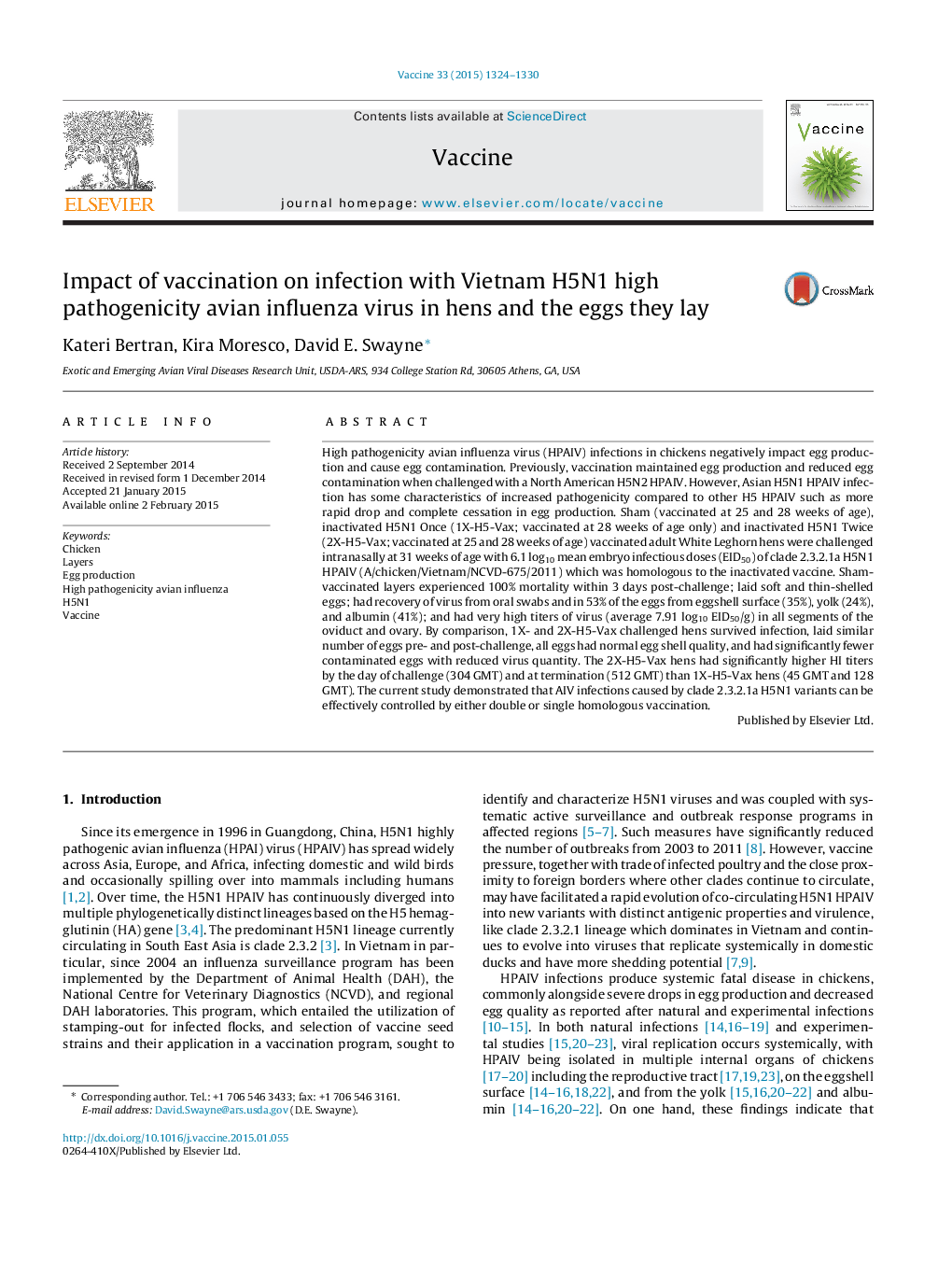| کد مقاله | کد نشریه | سال انتشار | مقاله انگلیسی | نسخه تمام متن |
|---|---|---|---|---|
| 10963883 | 1102695 | 2015 | 7 صفحه PDF | دانلود رایگان |
عنوان انگلیسی مقاله ISI
Impact of vaccination on infection with Vietnam H5N1 high pathogenicity avian influenza virus in hens and the eggs they lay
دانلود مقاله + سفارش ترجمه
دانلود مقاله ISI انگلیسی
رایگان برای ایرانیان
موضوعات مرتبط
علوم زیستی و بیوفناوری
ایمنی شناسی و میکروب شناسی
ایمونولوژی
پیش نمایش صفحه اول مقاله

چکیده انگلیسی
High pathogenicity avian influenza virus (HPAIV) infections in chickens negatively impact egg production and cause egg contamination. Previously, vaccination maintained egg production and reduced egg contamination when challenged with a North American H5N2 HPAIV. However, Asian H5N1 HPAIV infection has some characteristics of increased pathogenicity compared to other H5 HPAIV such as more rapid drop and complete cessation in egg production. Sham (vaccinated at 25 and 28 weeks of age), inactivated H5N1 Once (1X-H5-Vax; vaccinated at 28 weeks of age only) and inactivated H5N1 Twice (2X-H5-Vax; vaccinated at 25 and 28 weeks of age) vaccinated adult White Leghorn hens were challenged intranasally at 31 weeks of age with 6.1 log10 mean embryo infectious doses (EID50) of clade 2.3.2.1a H5N1 HPAIV (A/chicken/Vietnam/NCVD-675/2011) which was homologous to the inactivated vaccine. Sham-vaccinated layers experienced 100% mortality within 3 days post-challenge; laid soft and thin-shelled eggs; had recovery of virus from oral swabs and in 53% of the eggs from eggshell surface (35%), yolk (24%), and albumin (41%); and had very high titers of virus (average 7.91 log10 EID50/g) in all segments of the oviduct and ovary. By comparison, 1X- and 2X-H5-Vax challenged hens survived infection, laid similar number of eggs pre- and post-challenge, all eggs had normal egg shell quality, and had significantly fewer contaminated eggs with reduced virus quantity. The 2X-H5-Vax hens had significantly higher HI titers by the day of challenge (304 GMT) and at termination (512 GMT) than 1X-H5-Vax hens (45 GMT and 128 GMT). The current study demonstrated that AIV infections caused by clade 2.3.2.1a H5N1 variants can be effectively controlled by either double or single homologous vaccination.
ناشر
Database: Elsevier - ScienceDirect (ساینس دایرکت)
Journal: Vaccine - Volume 33, Issue 11, 10 March 2015, Pages 1324-1330
Journal: Vaccine - Volume 33, Issue 11, 10 March 2015, Pages 1324-1330
نویسندگان
Kateri Bertran, Kira Moresco, David E. Swayne,